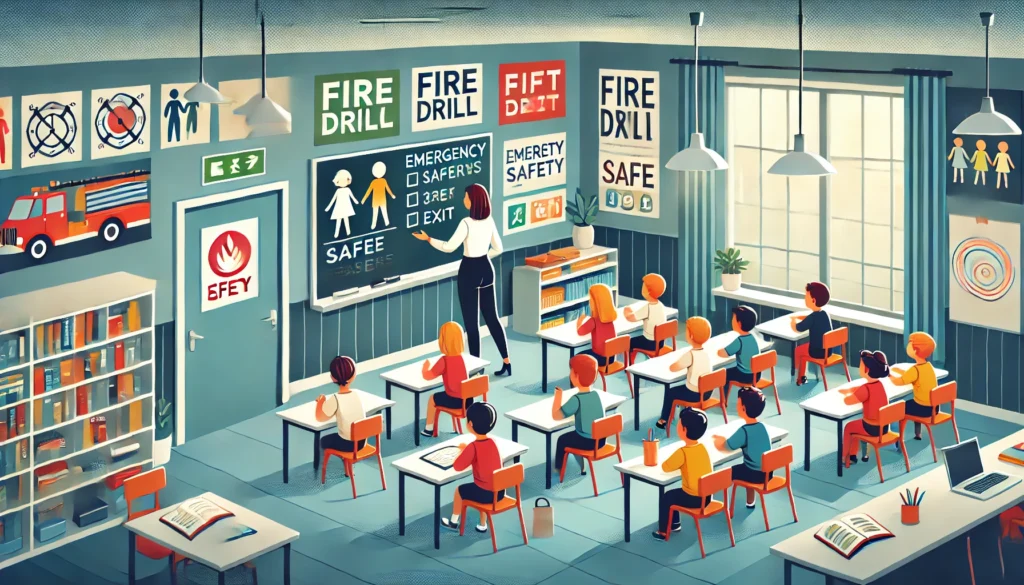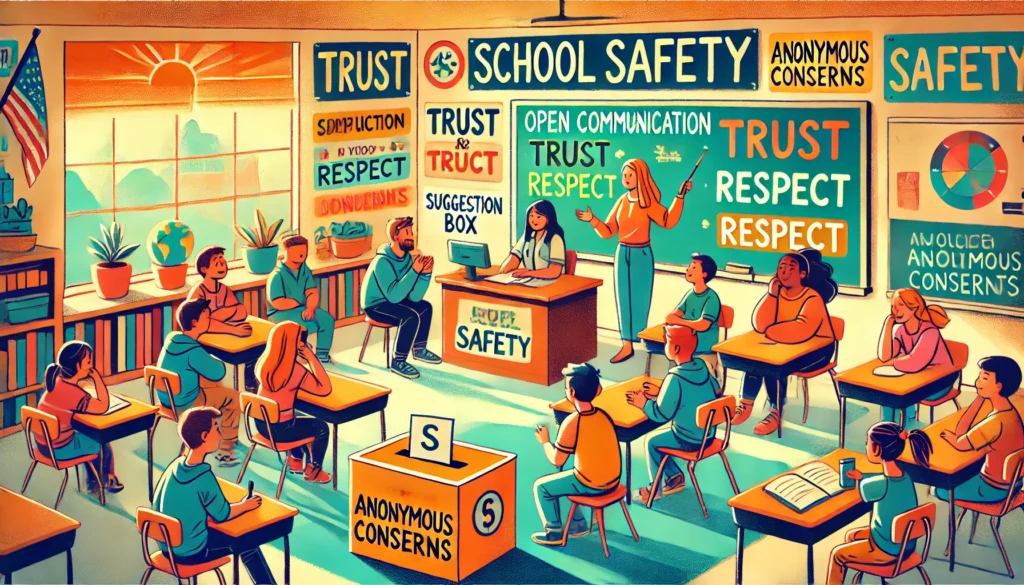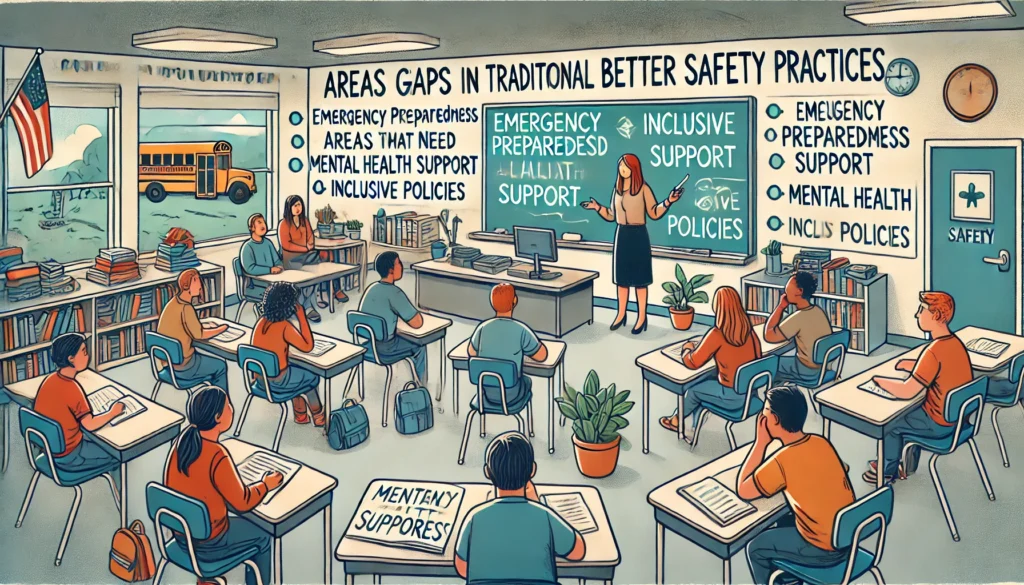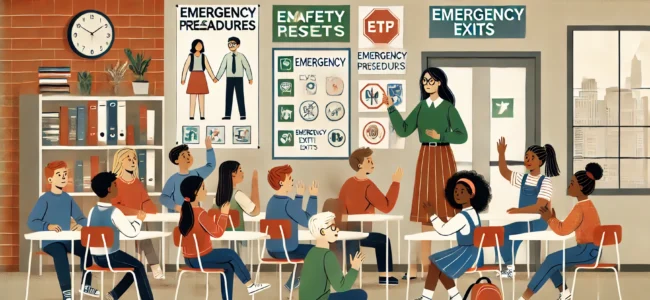Ensuring students feel secure in the classroom is foundational to effective teaching and learning. Yet, many educators grapple with creating a balanced environment where students feel physically, emotionally, and digitally safe. The complexities of today’s educational settings, ranging from increased use of technology to heightened awareness of mental health issues, add layers of responsibility to an already demanding profession.
Imagine walking into a classroom where every child feels empowered to express themselves without fear—where bullying, hazards, and risks are addressed proactively, and learning thrives. For many teachers, this might feel like a lofty ideal rather than a practical reality. However, with the right strategies, it’s entirely achievable.
This guide will delve into practical, evidence-based best practices for enhancing classroom safety. From addressing physical hazards to fostering inclusivity and leveraging technology to protect student data, this post will equip educators with actionable insights to create a secure and supportive learning environment. Whether you’re a seasoned teacher or just starting your journey in education, these tips will empower you to transform your classroom into a safe haven for all.
Understanding the Importance of Classroom Safety
Creating a secure classroom isn’t just about avoiding physical accidents; it’s about building an environment where students feel supported in every sense. When students feel safe, they’re more likely to engage, participate, and excel academically. In contrast, unsafe environments can lead to increased anxiety and hinder learning.

Physical Safety: For example, ensuring that walkways are free of clutter and emergency exits are accessible can prevent accidents. A primary school in Sydney saw a 30% reduction in classroom injuries after implementing a clear-floor policy and regular safety inspections. These simple measures can make a significant impact.
Emotional Safety: Emotional well-being is equally important. Teachers can foster this by creating anti-bullying policies and encouraging open dialogue. A teacher in Melbourne, for instance, introduced anonymous feedback boxes, allowing students to voice concerns without fear. This led to a noticeable improvement in class morale.
Digital Safety: With technology becoming a staple in classrooms, protecting students online is crucial. Educators can implement content filters and educate students about responsible internet use, ensuring that digital platforms remain tools for learning rather than sources of harm.
By addressing these aspects, teachers not only protect their students but also create an atmosphere where they can thrive.
Core Principles of a Safe Classroom
Physical Safety Measures
- Declutter the classroom and ensure proper lighting.
- Regularly check for potential hazards like loose wires or unstable furniture.
- Implement monthly safety checks, as seen in a high school in Brisbane, which reduced classroom-related accidents.
- Conduct routine fire and earthquake drills with clear instructions to save lives.
Emotional and Psychological Safety
- Promote inclusivity by establishing rules that encourage mutual respect and understanding among students.
- Encourage collaborative projects, as done by a middle school teacher in Perth, to improve peer relationships and reduce social tension.
- Train teachers to recognise and address signs of bullying or anxiety.
- Provide access to mental health resources, improving behaviour and academic outcomes, as highlighted by the Learning Policy Institute (Learning Policy Institute).
Digital Safety
- Set clear guidelines for technology use in the classroom.
- Implement a digital safety contract, like the one created by a teacher in Canberra, to reduce incidents of online misuse.
- Provide training for teachers on school safety and discipline, including digital safety, as reported by the NCES (nces).
Best Practices for Teachers
Effective classroom safety requires practical strategies that can be implemented daily. Here are some key steps for teachers:
Build Strong Communication Channels

Encourage open communication by fostering trust. An “open-door policy” can make students feel comfortable sharing concerns. For example, a teacher in Adelaide initiated weekly check-ins with students, where they could discuss any issues in a relaxed setting. This not only improved safety but also strengthened teacher-student relationships.
Proactive Classroom Management
Set clear behavioural expectations from the outset. For example, displaying rules visibly in the classroom and discussing them regularly ensures everyone understands what is expected. A primary school teacher in Hobart used role-playing scenarios to teach conflict resolution, which significantly reduced disruptive incidents.
Incorporate Safety Drills into Routine
Regular drills prepare students for emergencies. Tailor these to the age group; younger children might need simple instructions, while older students can handle more detailed procedures. A secondary school in Darwin integrated monthly safety drills into its curriculum, ensuring readiness without creating anxiety.
Leverage Parental Involvement
Parents are essential allies in maintaining classroom safety. Host workshops or send newsletters to keep them informed about safety protocols. A school in Brisbane found that involving parents in anti-bullying campaigns significantly improved the effectiveness of their policies.
By adopting these practices, teachers can create a safer and more supportive learning environment, allowing students to focus on their education without unnecessary distractions.
Leveraging Technology to Enhance Classroom Safety
Technology has revolutionised classroom safety, offering tools to mitigate risks effectively.
Safety Apps and Tools
- Implementing visitor management systems or emergency alert apps can enhance physical safety. For example, a primary school in Sydney introduced an app that alerts staff of emergencies in real-time, improving response times during incidents.
AI-Driven Solutions
- Artificial intelligence can help monitor and predict risks. For instance, behavioural analysis tools can identify patterns indicative of bullying or stress. A high school in Melbourne piloted such software, leading to early interventions that improved student well-being.
Cybersecurity Measures
- Protecting student data is vital in today’s digital classrooms. Use encrypted systems and teach students about data privacy. A school in Perth implemented a cybersecurity curriculum, which not only safeguarded information but also educated students on digital responsibility.
The inclusion of these technologies not only improves classroom safety but also builds a framework for proactive risk management.
Addressing Gaps in Traditional Classroom Safety Practices

- Mental Health Support: Traditional safety measures often overlook mental health. Providing access to counsellors and incorporating social-emotional learning (SEL) into the curriculum can fill this gap. A school in Brisbane introduced SEL sessions, which significantly reduced incidents of anxiety and behavioural issues. The Learning Policy Institute highlights that comprehensive mental health programs improve outcomes (Learning Policy Institute).
- Community Involvement: Safety shouldn’t end at the classroom door. Engaging parents and local communities in safety initiatives can amplify their impact. For instance, a Sydney school partnered with local law enforcement to host safety workshops, creating a network of support for students.
- Adapting to Modern Threats: From cyberbullying to hybrid learning risks, modern classrooms face new challenges. Teachers need ongoing training to stay ahead. A Melbourne school implemented annual safety training for staff, covering topics like digital threats and inclusive teaching strategies.
Addressing these gaps can help educators take a more realistic approach to classroom safety, protecting students in every dimension.
The Future of Classroom Safety
Emerging Trends
- Mental Health Awareness: Mental health will likely be central to safety protocols. Schools that integrate mindfulness programs into daily routines have reported reduced stress and improved focus among students.
- Hybrid Learning Adaptations: As hybrid learning becomes more common, it is critical to address digital safety, engagement, and accessibility. Schools with robust digital infrastructures and well-trained teachers are leading the way.
- Wearable Safety Technology: According to the 2024 School Safety Trends Report by CENTEGIX, there has been a 40% increase in wearable safety technology adoption by educators and staff compared to the previous year (centegix).
Collaborative Safety Models
- Community Engagement: Teachers, parents, and local authorities collaborating on safety workshops can build stronger support systems for students.
- Technology-Driven Solutions: Tools that connect stakeholders, such as real-time communication platforms and AI-driven risk monitors, ensure a seamless flow of safety information.
By embracing these trends, educators can transform classrooms into future-ready environments that prioritise safety and inclusivity.
Transforming Your Classroom into a Safe Haven
Creating a safe classroom isn’t just a goal—it’s a journey that requires ongoing effort and adaptation. By addressing physical, emotional, and digital safety comprehensively, teachers can build an environment where students not only learn but also thrive.
Start by implementing small, impactful changes: conduct regular safety checks, establish clear rules, and encourage open communication. Invest in tools and training that make safety manageable, and don’t hesitate to involve parents and the broader community.
Every step you take towards a safer classroom is a step towards a brighter future for your students. Use this guide as a roadmap to assess your current practices and identify areas for improvement. With dedication and the right strategies, you can ensure every student feels secure, supported, and ready to succeed.

